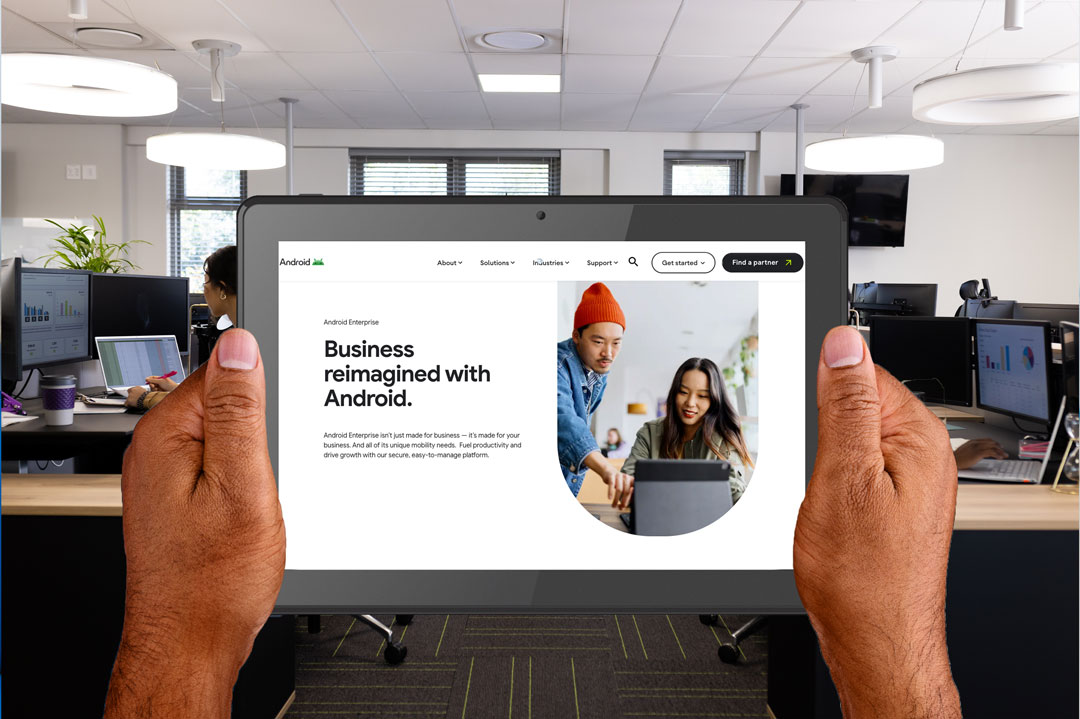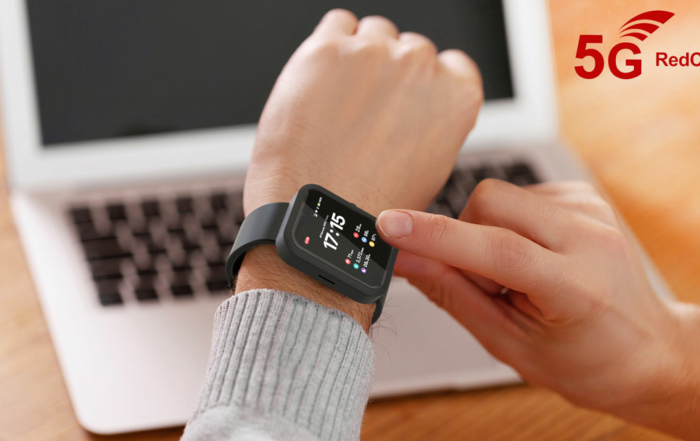Navigating the Future: Android Enterprise and the Evolving Landscape of Enterprise Mobility
February 29, 2024

As enterprise mobility evolves rapidly, staying ahead means embracing the dynamic interplay of technology and strategy. It’s evident that Android devices will continue to play a pivotal role in shaping the future of enterprise mobility; however, amidst the promises of 5G, new Wi-Fi standards, the evolution of wearables, and the complexities of device management, navigating this landscape requires a strategic approach. Let’s explore what lies ahead.
Connectivity Challenges and Opportunities for Android Devices
While the promise of 5G technology looms on the horizon, its widespread adoption within the enterprise realm remains a work in progress. According to PwC’s insights on “What does 5G mean for Enterprise?” the infrastructure necessary for seamless integration may not fully materialize until 2025. For now, critical connections predominantly rely on 4G networks, as the deployment of 5G-enabled devices faces hurdles such as high component and certification costs.
Although 5G holds immense potential, particularly for sectors like healthcare and logistics, custom IoT applications are still in the early stages. Early adopters in retail and healthcare are paving the way, but broader adoption will likely take time.
Meanwhile, modern devices boast the latest Wi-Fi capabilities, offering faster performance, improved battery life, and enhanced security standards like WPA3, the latest security protocol for Wi-Fi.
However, upgrading Wi-Fi networks within businesses isn’t just about adopting new technology; it’s also about dealing with existing infrastructure. Many businesses would love to enhance the security and capabilities of their current Wi-Fi networks, but they’ve already invested in their current Wi-Fi infrastructure, which is not at the end of its lifecycle; thus, early replacements would not be a financially sound decision. While consumer devices have the latest Wi-Fi features that cater to knowledge work use cases, businesses are not ready to rip and replace their current infrastructure to take advantage of the new standards. This situation highlights the urgent need for solutions that smoothly connect old network systems with new technology, ensuring backward compatibility and seamless integration.
Wearables: Expanding Horizons
Wearable technology, once confined to the realm of consumer gadgets, is now venturing into enterprise territory, unlocking new use cases and opportunities. While consumer-centric wearables dominated the market initially, enterprises are now seeking specialized devices tailored to their unique needs. From remote patient monitoring to location awareness, the demand for wearables optimized for enterprise applications is on the rise.
Enterprises envision wearables in diverse form factors, from chest-mounted devices to rings, catering to a spectrum of use cases. We are now in an era where there are many wearable use cases that do not need all the bells and whistles of a consumer-first device. Enterprises are now looking for specific use-case wearables that are more rugged, remotely manageable without tethering to a phone via Bluetooth, and have a much longer life span that will significantly lower the Total Cost of Ownership (TCO) for any enterprise.
Learn more about custom wearables here.
Modern Device Management: The Android Enterprise Ecosystem
Effective device management lies at the heart of enterprise mobility, yet many companies struggle with the complexities of overseeing a fleet of Android devices. Despite the evolution of EMM solutions, many fail to address the needs of enterprises when managing Android devices, gaps persist in awareness and implementation. Many organizations remain unaware of modern Android management paradigms, including the efficiency gains offered by features like zero-touch enrollment.
Even seasoned mobility teams may lack comprehensive training on maximizing the benefits of Android Enterprise, from device deployment to application management and security protocols. This lack of awareness can lead to inefficiencies and vulnerabilities in device management workflows.
To bridge this gap, resources like the Android Enterprise Academy offer self-study courses, empowering teams to delve deeper into modern device management practices. Moreover, select Android Enterprise Gold partners provide invaluable expertise and support, serving as extensions of Google’s teams to assist enterprises in achieving optimal outcomes.
In this landscape, Mambo, our proprietary Enterprise Mobility Management (EMM) platform, stands out. Built on Google’s Android Management APIs (AMAPI), Mambo streamlines device deployment with zero-touch enrollments, ensuring seamless onboarding of devices into the enterprise ecosystem.
Learn more about Mambo Mobility.
Social Mobile is Leading the Way in Enterprise Mobility
It’s clear for enterprises that staying ahead requires not only embracing cutting-edge technologies, but also mastering their implementation and management. As an Android Enterprise validated Gold partner, Social Mobile understands the challenges businesses face in harnessing the full potential of Android devices within their mobility strategies.
Our commitment to delivering tailored solutions and providing ongoing support ensures that our clients maximize efficiency, enhance security, and capitalize on the opportunities presented by emerging technologies and wearables. This dedication to seamless integration and client success remains at the forefront of our mission as we continue to shape the future of enterprise mobility together.
Latest Articles
GET A QUOTE.
Let’s start designing your custom enterprise mobility solution.





